The Scoville scale rates the spiciness of peppers through the measurement of capsaicin levels. Created by Wilbur Scoville, the unit of measurement is the Scoville Heat Unit (SHU), and chili peppers range from 0 SHUs (bell pepper) to over 2 million SHUs (Carolina Reaper).
There are thousands of different pepper varieties around the world, with more being created every year through plant breeding. Thus, pepper heat levels can vary all over the scale. In this article, you’ll learn how spicy various peppers are according to the Scoville scale.
See our ‘Silly Scoville Scale’ here where we give honest examples of the experience of different heat levels.
Peppers On The Scoville Scale
Not everyone likes their peppers ultra-spicy. So, it can be helpful to get a sense for where each pepper falls on the Scoville scale to set your personal limits.
For example, if you’re comfortable with jalapeños, you know that you can handle heat in the 5,000 SHU range. If you want to step it up, you can try something like a cayenne or a Fresno pepper.
● Bell Pepper
Scovilles: 0
Heat: None at all
● Jalapeño Pepper
Scovilles: 2,500 – 8,000
Heat: Moderate
● Cayenne Pepper
Scovilles: ~20,000
Heat: Pretty hot.
● Habanero Pepper
Scovilles: 100,000 – 300,000
Heat: Very hot (painful)
● Ghost Pepper
Scovilles: ~1,000,000
Heat: You might cry…
● Pepper X
Scovilles: Over 2,600,000!
Heat: You will cry.
This is certainly not an exhaustive list of peppers on the Scoville scale, but it should give you a good idea of what is mild, spicy, and extra hot. There are some amazing pepper varieties out there, coming in a wide range of heats.
The most common spicy peppers that are available everywhere are jalapeños, cayennes, and habanero peppers. There is a huge jump in heat between these, so if you have tried them all, you’ll know what the difference is between a 3,000 SHU pepper and a 200,000 SHU pepper.
With new peppers being cultivated by plant breeders around the world, we are sure to have a new hottest pepper soon. For now, the pepper heat scale ranges from no heat at all, to the fiery hot Carolina Reaper.
Beyond that, you’re looking at bear deterrent spray, which can cause temporary blindness when sprayed. We think that’s a bit too spicy.
Sweet and Mild Pepper Varieties
For those looking for heatless peppers or mild varieties, you have many options. Since not everyone can handle spicy food, there has been a lot of work put into breeding flavorful sweet varieties.
Sweet peppers (0 Scovilles):
- Bell pepper
- Carmen pepper
- Purple beauty pepper
- Sweet banana pepper
- Jimmy nardello
- Cubanelle
- Lunchbox pepper
- Habanada
- Nadapeño
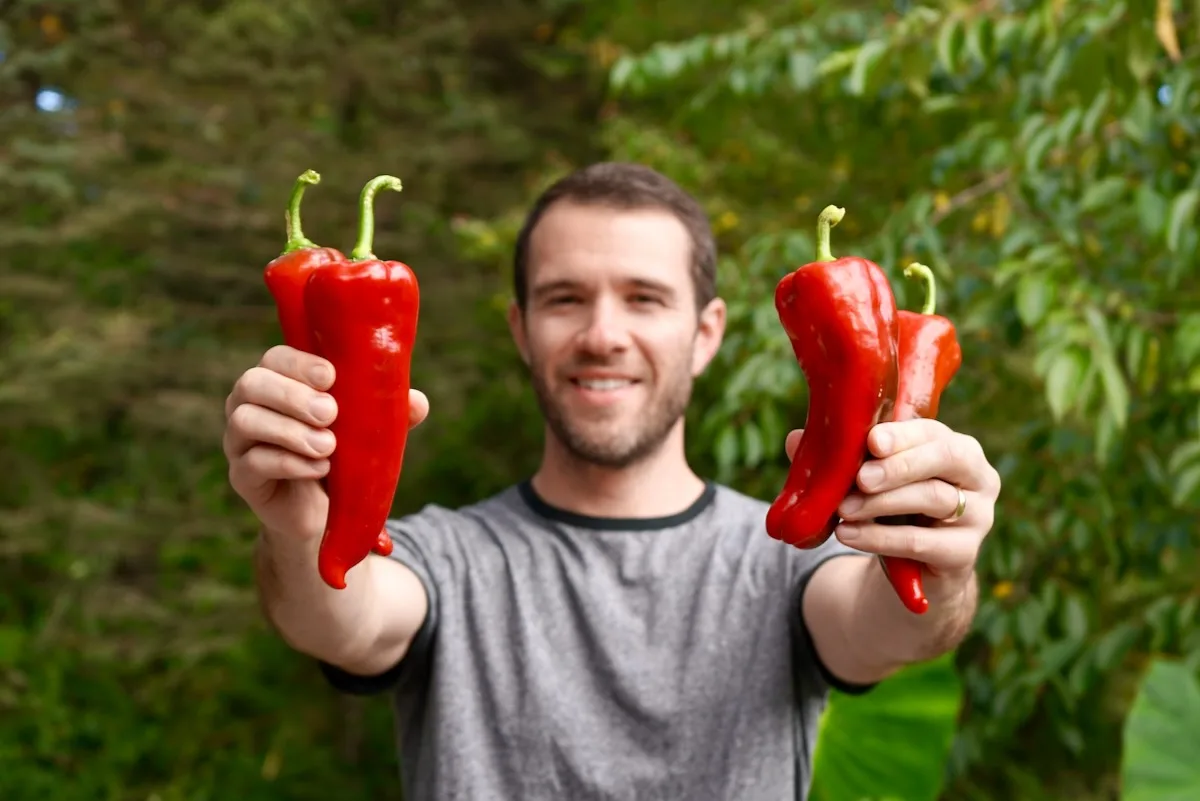
Mild peppers (100-3000 Scovilles):
- Poblano (or ancho)
- Anaheim
- Aji dulce
- Aji panca
- Hatch chiles
- Pasilla
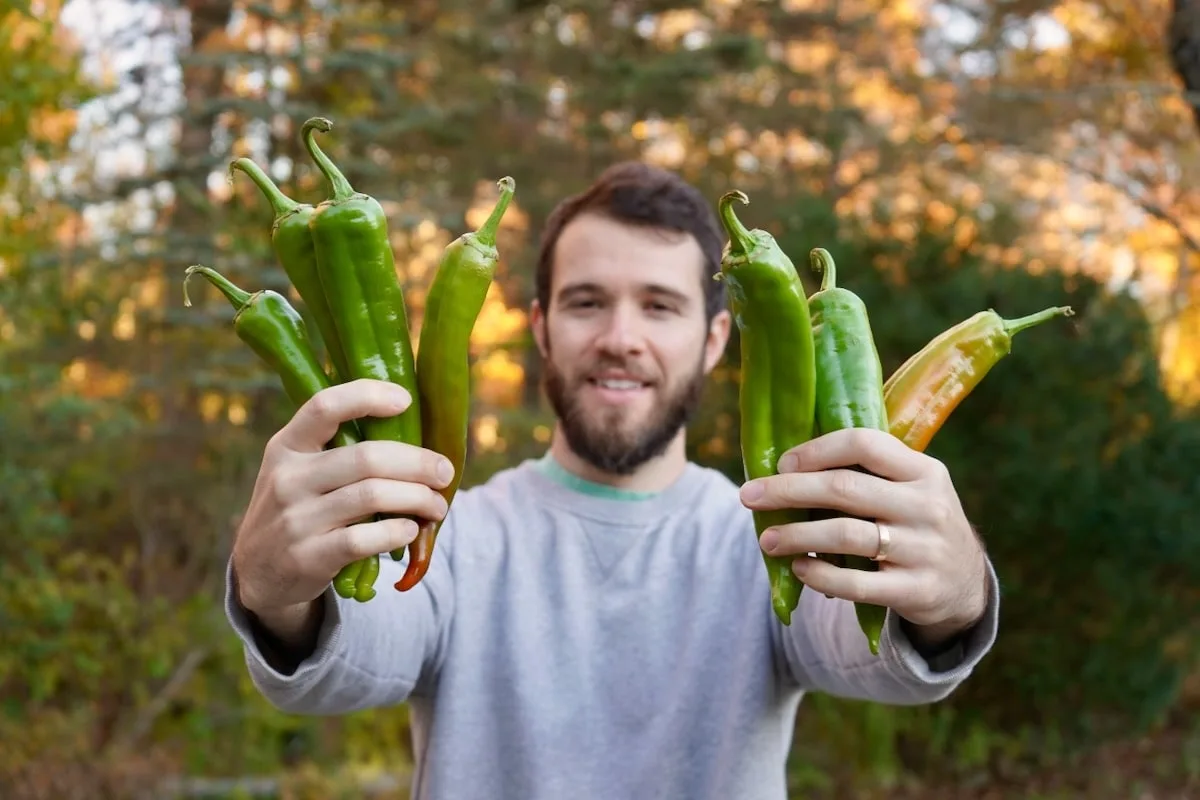
Medium and Hot Pepper Varieties
Hot chilies are popular around the world and have led to some of our personal favorite types of cuisine. From Sichuan style dishes to jalapeño poppers, the sensation of heat brings another dimension to eating!
Hot peppers (3,000-100,000 Scovilles):
- Jalapeño
- Serrano
- Fresno
- Aji amarillo
- Cayenne
- Piri piri
- Cobanero
- Himo togarashi
- Santaka
- Piment d’Esplette
- Tabasco
- Aji charapita
- Sugar rush
- Aji fantasy
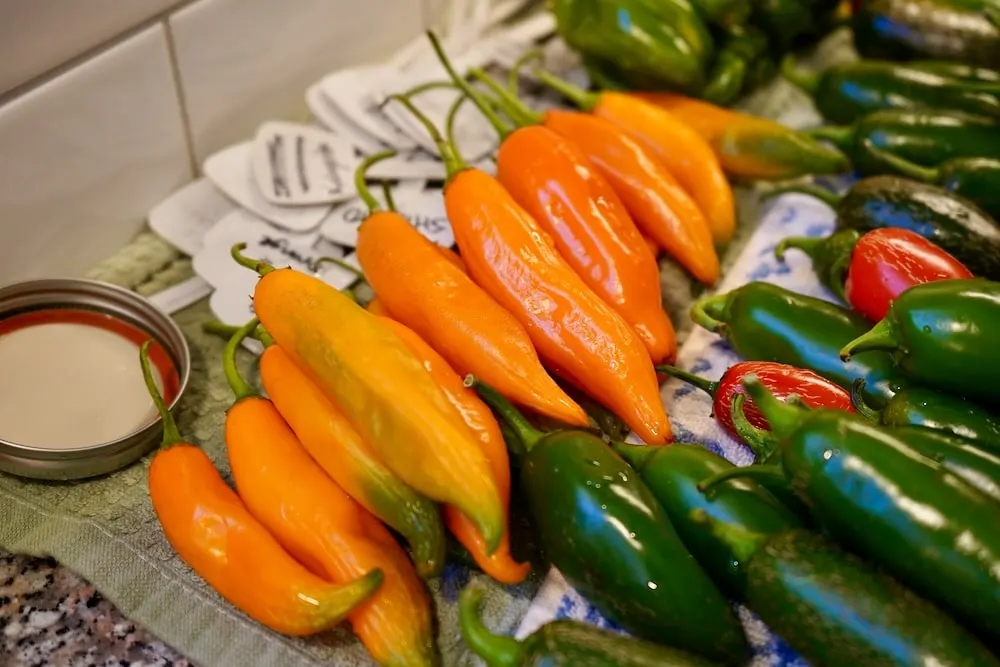
Very hot peppers (100,000-500,000 Scovilles):
- Habanero
- Scotch bonnet
- Bird’s eye pepper
- Bahamian goat
- Fatalii pepper
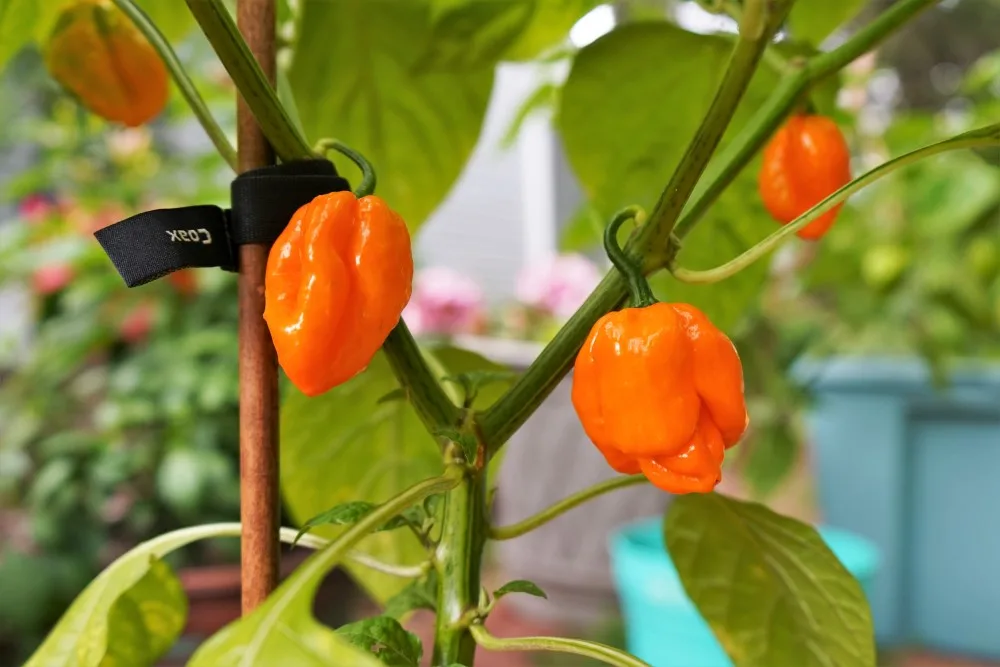
The Hottest Pepper Varieties
If store bought habaneros just aren’t hot enough for you, there is plenty of room to go hotter (though you’ll probably have to grow your own). These are some of the hottest peppers currently available to grow and eat, if you dare.
Hottest peppers (500,000 Scovilles and up):
- Red savina habanero
- Ghost pepper (bhut jolokia)
- 7 pot pepper
- Brain strain
- Chocolate bhutlah
- Death spiral
- Purple reaper
- Primotalii
- Moruga scorpion
- Carolina reaper
- Pepper X (current Guinness world record holder at 2.69M Scovilles)
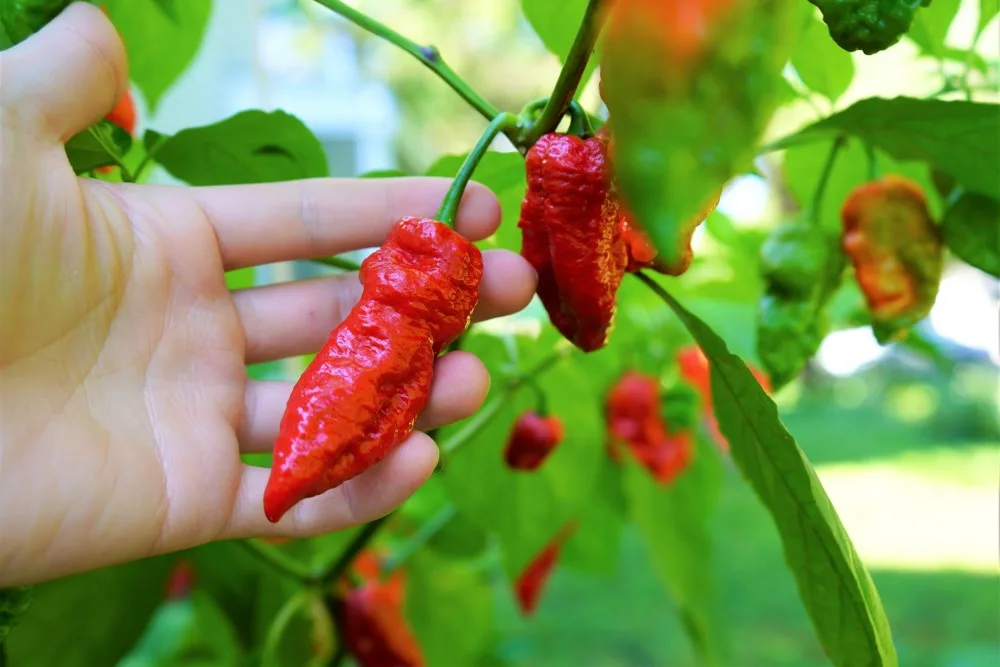
Want A Silly Version of the Scoville Scale?
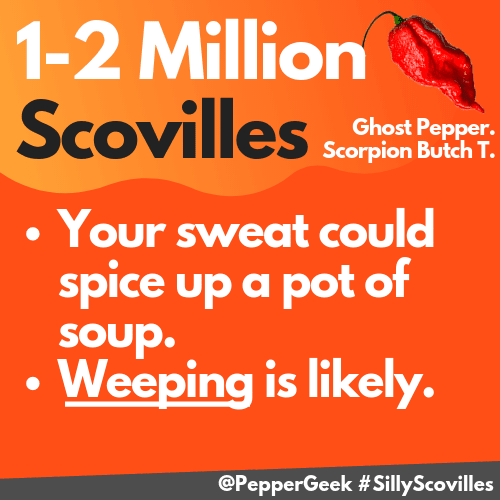
Check out our “Silly Scovilles” post, where we give a frank example of how it feels to experience each of the different levels of the Scoville scale.
The Big Scoville Scale Chart
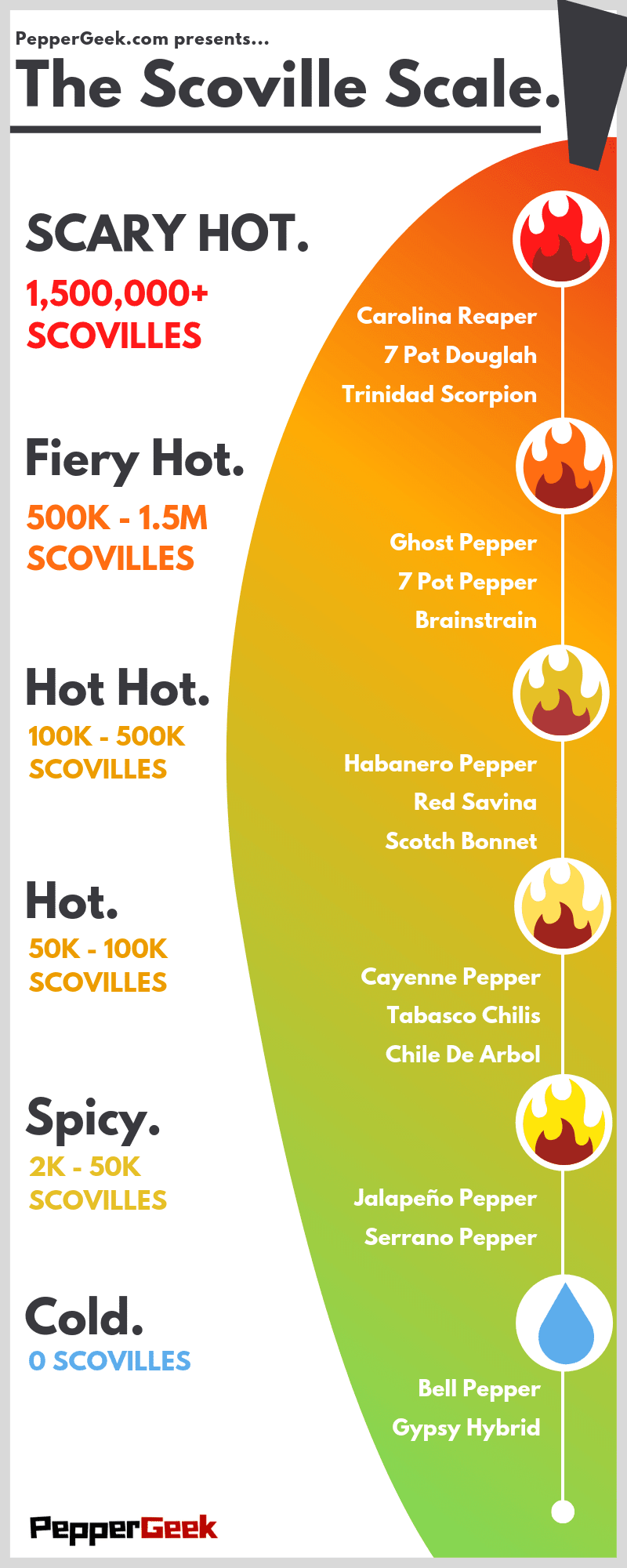
I hope this article helped you get an idea of the Scoville scale and where your favorite peppers rank on it. Also, maybe it can help you draw the line for what is too hot for you.
Tip: If your spice tolerance is low, the only way to increase it is to eat more spicy food. Over time, your tolerance will naturally increase.
Read Next:


Kevin
Monday 14th of November 2022
Wow great information it puts the heat into perspective when you can see the Scoville scale rating each chilli like this.